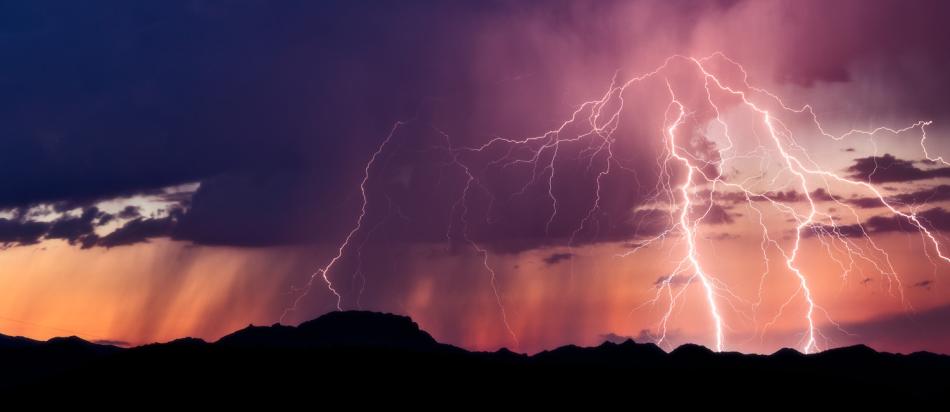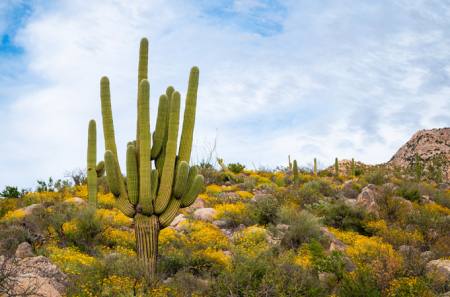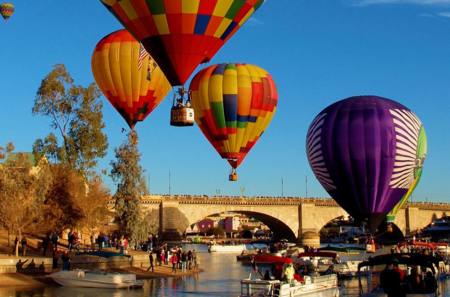
Must Do
Worth the Wait
Mark your calendar to experience these one-of-a-kind attractions that require advance planning.
Some of Arizona's best sights, attractions and events require a little planning or patience. But oh, my, are they ever worth it.
Havasu Canyon
If Shangri-La had a garden spot, it would look like Havasu Canyon. Deep in a remote corner of the Grand Canyon, a cool stream forms a series of turquoise waterfalls, which plunge over steep drop-offs into luxurious pools. Havasu Canyon is home to the American Indian Havasupai Tribe, whose name means "people of the blue-green waters."
To safeguard this beautiful and fragile environment, the Havasupai severely limit visitation. Permits are required and hard to come by. From the canyon rim, it's an eight-mile hike to the small village of Supai. It's two more miles to the lanky campground that stretches along the creek between Havasu Falls and Mooney Falls. Obtain a permit by calling the Havasupai tourism office. No day hiking is permitted. Visitors can camp up to one week.
Navajo National Monument
Navajo National Monument near Kayenta protects remarkably preserved ancestral Puebloan dwellings dating back centuries. The easiest to see is Betatakin. Built in a cavernous alcove in the canyon wall, Betatakin was occupied in the late 1200s. The ruins are visible from an overlook a half-mile from the visitor center, but for an up-close look take a ranger-led tour conducted from May to September. These strenuous three-to-five-mile round-trip hikes are not recommended for anyone with health issues. Tours are limited to 25 on a first-come, first-served basis.
The hike to Keet Seel involves more than just showing up. Advance reservations are required to see the largest ancient cliff dwelling in Arizona. Only 20 people are allowed to visit per day so book your permit early. Sheltered by a massive rock overhang, Keet Seel is considered to be the most intact large site in the Southwest, looking very much as the inhabitants left it 700 years ago. Granaries, pottery, petroglyphs, timbers and corncobs give archeologists a glimpse at the distant past. The hike is 17-miles round-trip, including a 1,000-foot climb down a cliff face and multiple stream crossings along the canyon floor. It can be done as a long day hike or there is a small campground near the ruins.
Cactus League Spring Training
The great Chicago Cub Ernie Banks used to say, "It's a beautiful day for a ballgame…let's play two." That same sense of bubbling joy permeates Major League Baseball's Cactus League Spring Training.
It's the time of year filled with promise and possibility. Budding young stars learn from seasoned veterans, and fans are practically on the field for the action. Before they become the "Boys of Summer," and the race for the pennant is on, they're just boys in spring, playing a game that is a beautiful blend of skill, drama and poetry. Today, Greater Phoenix hosts 15 teams for spring training from late February through March. And under balmy blue Arizona skies it's always a beautiful day for a ballgame. Let's play two.
Wildflower season
Like everything else in life, spring wildflowers don't come with a guarantee. Maybe that's why some folks pursue them with such passion. Some years they erupt with a profound sense of purpose, sweeping across hillsides in endless waves. Other years, the color is more elusive. It all depends on the amount and timing of winter rains.
Here's a suggestion: Don't worry about whether it is a banner season or not. Go forth and look for wildflowers. What's the absolute worst thing that can happen? You'll spend a warm afternoon in February or March in a peaceful corner of the desert surrounded by only hundreds of blooms instead of thousands. Frankly, that's how every spring day should be spent.
Monsoon rains
Perhaps no event is as eagerly awaited as the summer monsoon season. Just when temperatures are rising and the landscape is drying, monsoon rainstorms sweep in amid a wall of gathering clouds. For a few wonderful moments the heavens quiver and a splattering cascade falls from above. The air cools and a musky, earthy perfume is released. Raindrops impale themselves on cactus spines and the light turns wild and clear as glass.
Officially, monsoon season begins on June 15 and ends on September 30, with storms peaking between mid-July and mid-August. A shifting wind pattern draws moist air from the Gulf of Mexico. Life is granted an extension because of rain. Plans, dreams and blooms that have been on indefinite hold suddenly flourish. Hope is renewed. Anything seems possible. It has rained in the desert.




